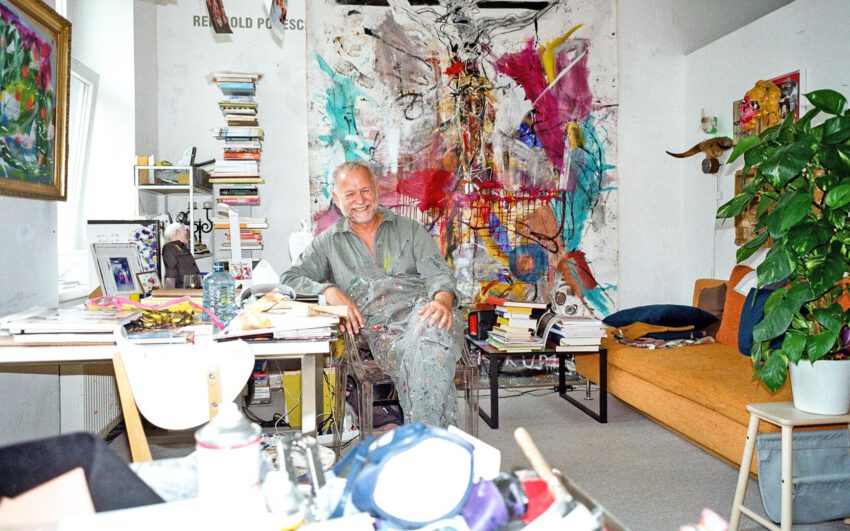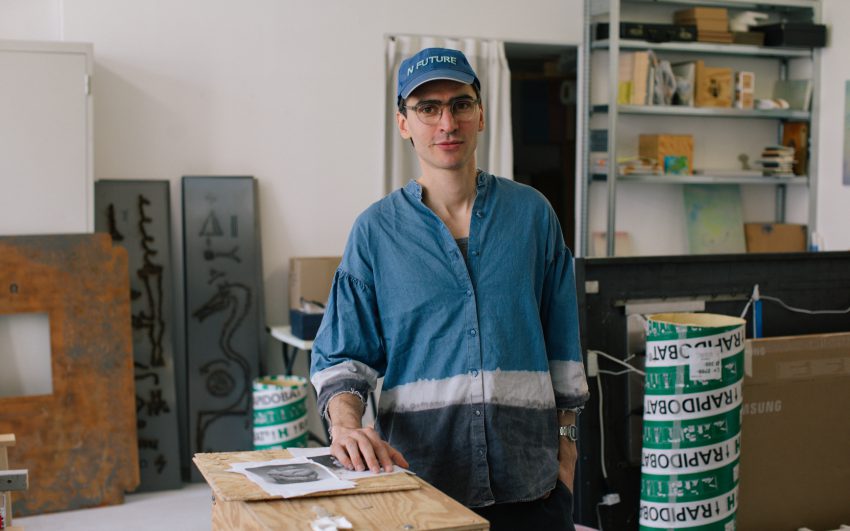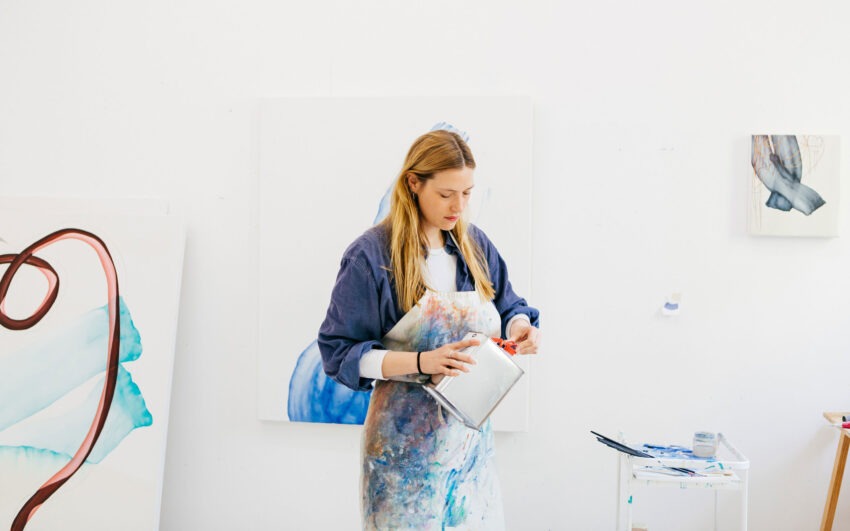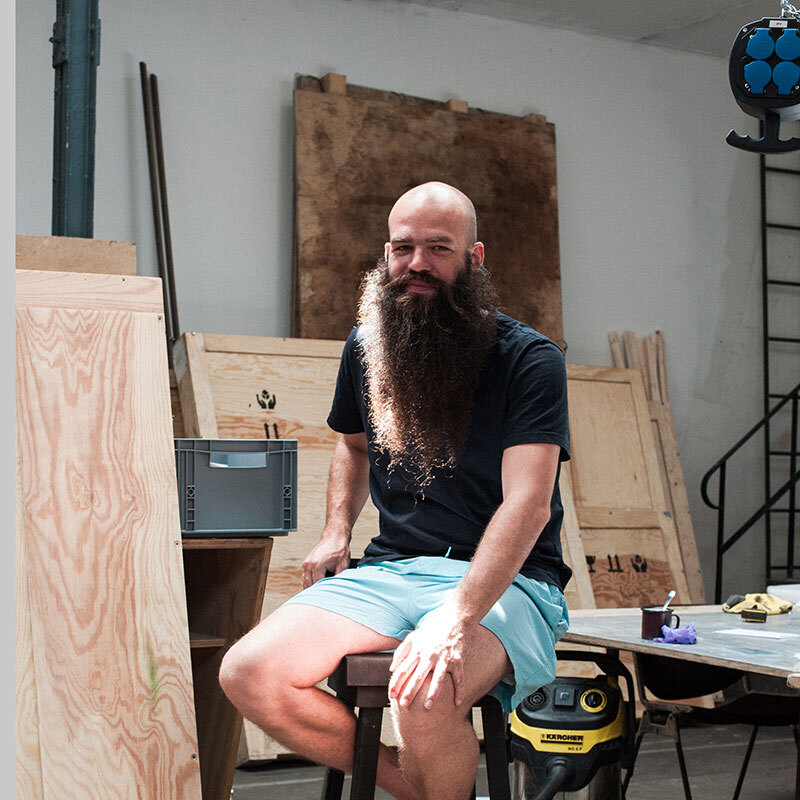Kuwaiti artist Monira Al Qadiri studied in Tokyo for ten years before working in Dubai, Beirut, Amsterdam, and Berlin, her current base. Bringing together her love of colourful Japanese pop aesthetics with her interest in the Arab world’s “emotional landscapes of tragedy”, her work uses sculpture, installation, film and video, and performance to explore her personal history in relation to that of the Gulf, often in reference to the region’s strong oil and petroculture.
Monira, how did you first become interested in art?
My mother was and still is an active artist. Her name is Thuraya Al-Baqsami and she’s been working since the sixties. I grew up inside her studio with my sisters. Our idea of playing was just messing around with paints and papers that she gave us. I never really thought about doing anything else with my life other than being an artist. A lot of artists don’t like to talk about the genetic genealogy of art, or to admit the influence of their parents on them, but I do. If my mother hadn’t been an artist, I don’t know if I would be one today.
Tell us more about the kind of work your mother was making when you were a child.
She makes figurative paintings and prints. It’s rare in our part of the world: it’s not very well regarded to paint people because it is considered as inspiring idolatry, which is sacrilegious. From the outset my mother was quite rebellious.
Did your mum actively encourage you to pursue art professionally? Some parents discourage their children from following in their footsteps because they know how challenging the industry can be.
For her, being an artist is the best thing in the world. She is incredibly supportive. Even when I do bad work, she thinks it’s the most amazing thing ever. She’s a classical artist, so she always wants me to return to painting. I do miss it sometimes.
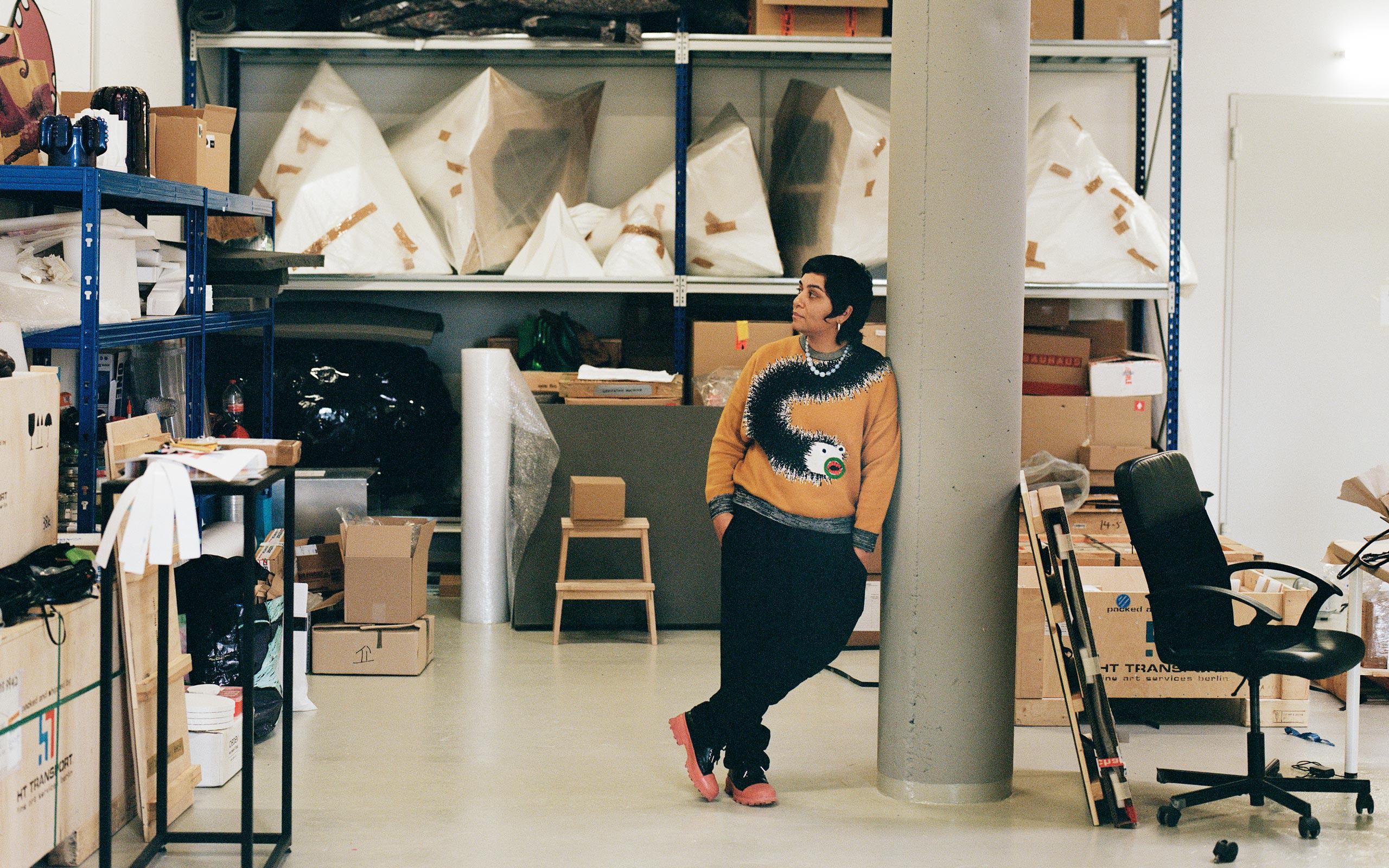
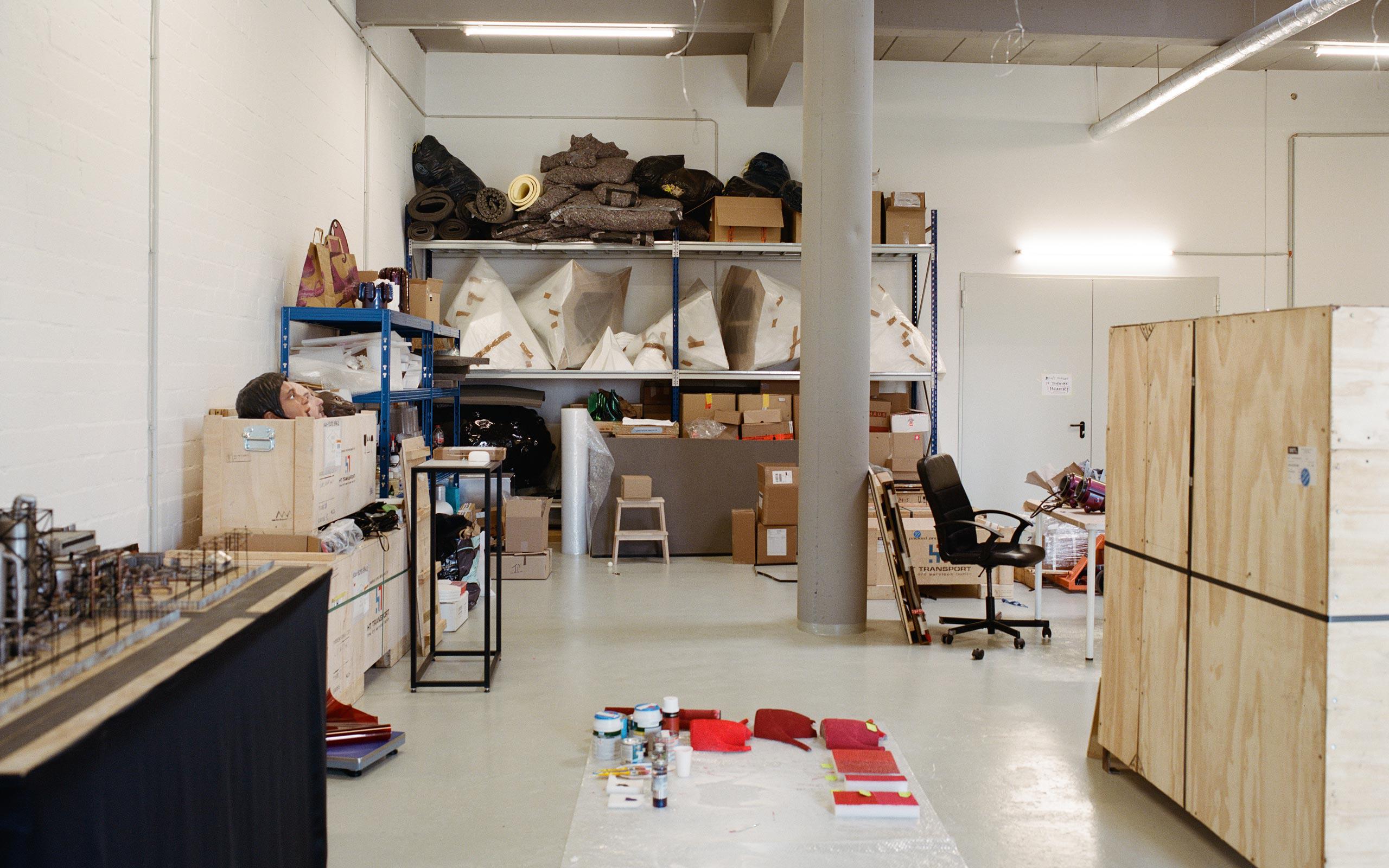
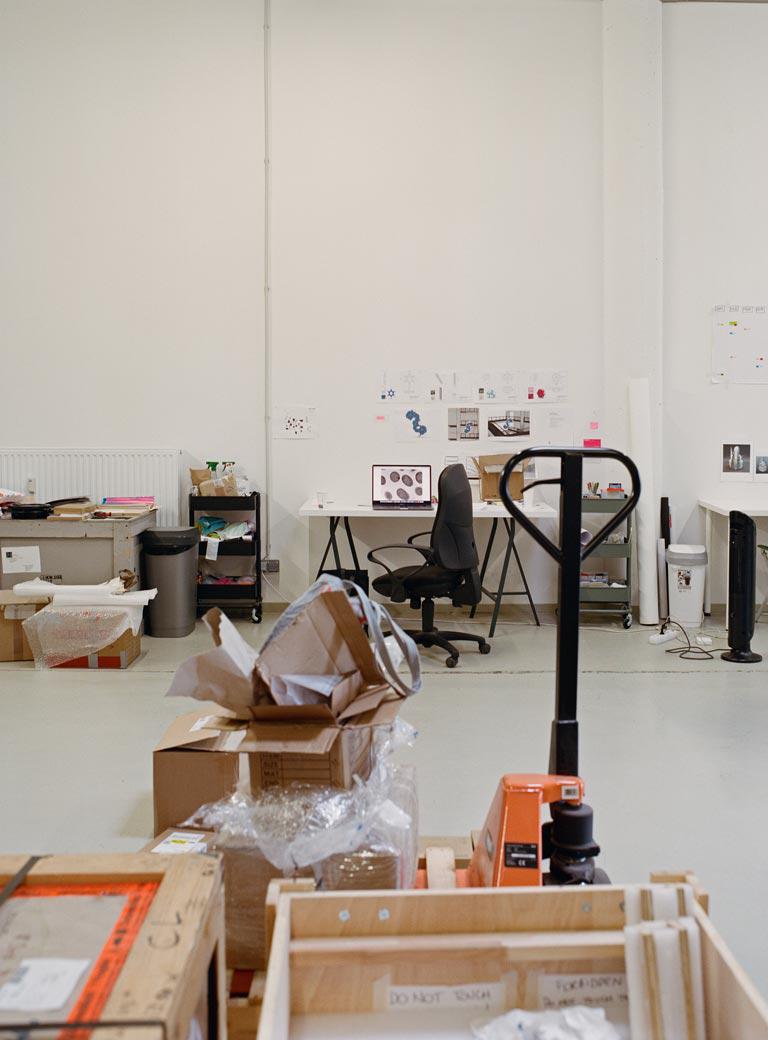
You moved to Japan to study when you were 16. What inspired you to leave home at such a young age?
While Kuwait is very conservative, I grew up in a very liberal, atypical family unit: My mum was an artist, and my father was a diplomat. As a result, I always felt like an alien in my own country. I had a very strong desire to escape, which was accentuated by the outbreak of the Gulf War in 1990. I was seven years old and obsessed with Japanese cartoons. I decided that after the war I would move to Japan and become a cartoonist myself. My parents were very understanding and said that if I figured out a way to get there, they wouldn’t stand in my way. So that’s what I did: I taught myself Japanese and got a scholarship to be able to support myself financially. They were quite surprised that I managed to work it all out, but they thought it was beneficial for me to leave my own context. That’s how you grow as a person.
You ended up staying in Japan for 10 years, obtaining your PhD in Intermedia Art at Tokyo University of the Arts in 2010. Tell us about your studies in Japan, and some of the key things you learnt during your training that went on to shape who you’ve become as an artist?
The Arab world is very literary and focused on poetry and writing. In contrast, Japan is hyper visual, which I really absorbed during my time there. The way that they look at and make art is completely different. My professors would always tell me off for explaining my work too much. It’s a very Japanese thing that art should speak for itself. Their approach to human relationships is quite similar: You almost have to understand telepathically what other people are thinking without them saying anything. At first, I had quite a rebellious attitude towards Japan’s more reserved culture—in the Arab world we talk about everything and nothing!—but after ten years, it became part of my identity. So, I did other things: In Japan, beauty is still very relevant in art. As a result, I still like to think in terms of aesthetics, form, and colour when I’m creating.
Was it in Japan that you started moving away from painting towards a more multidisciplinary approach?
When I arrived in Japan, I decided that I shouldn’t study painting and that I should try branching out into different disciplines. At first, I really wanted to make animations, but then I ended up going more into film, video, performance, and sculpture. I became very intrigued by the third dimension, which was very exotic to me as a predominantly 2D artist. I didn’t know how to sculpt with my hands, so I started working digitally. Along the way I discovered the world of 3D printing. Everything escalated from there.
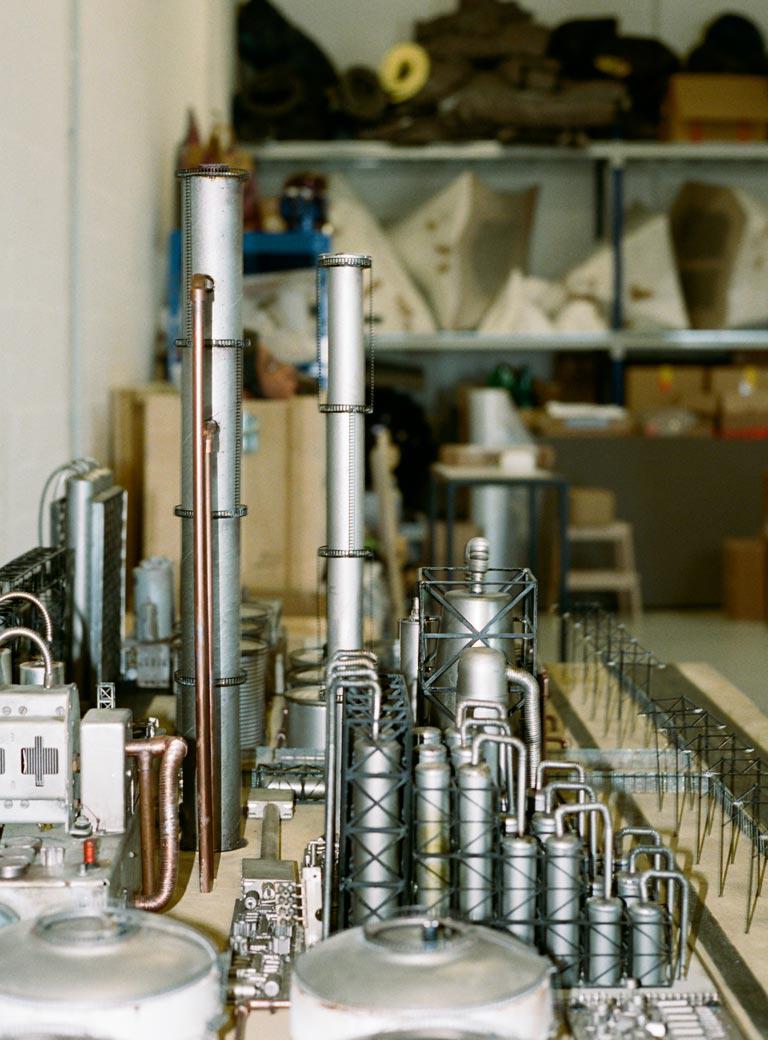
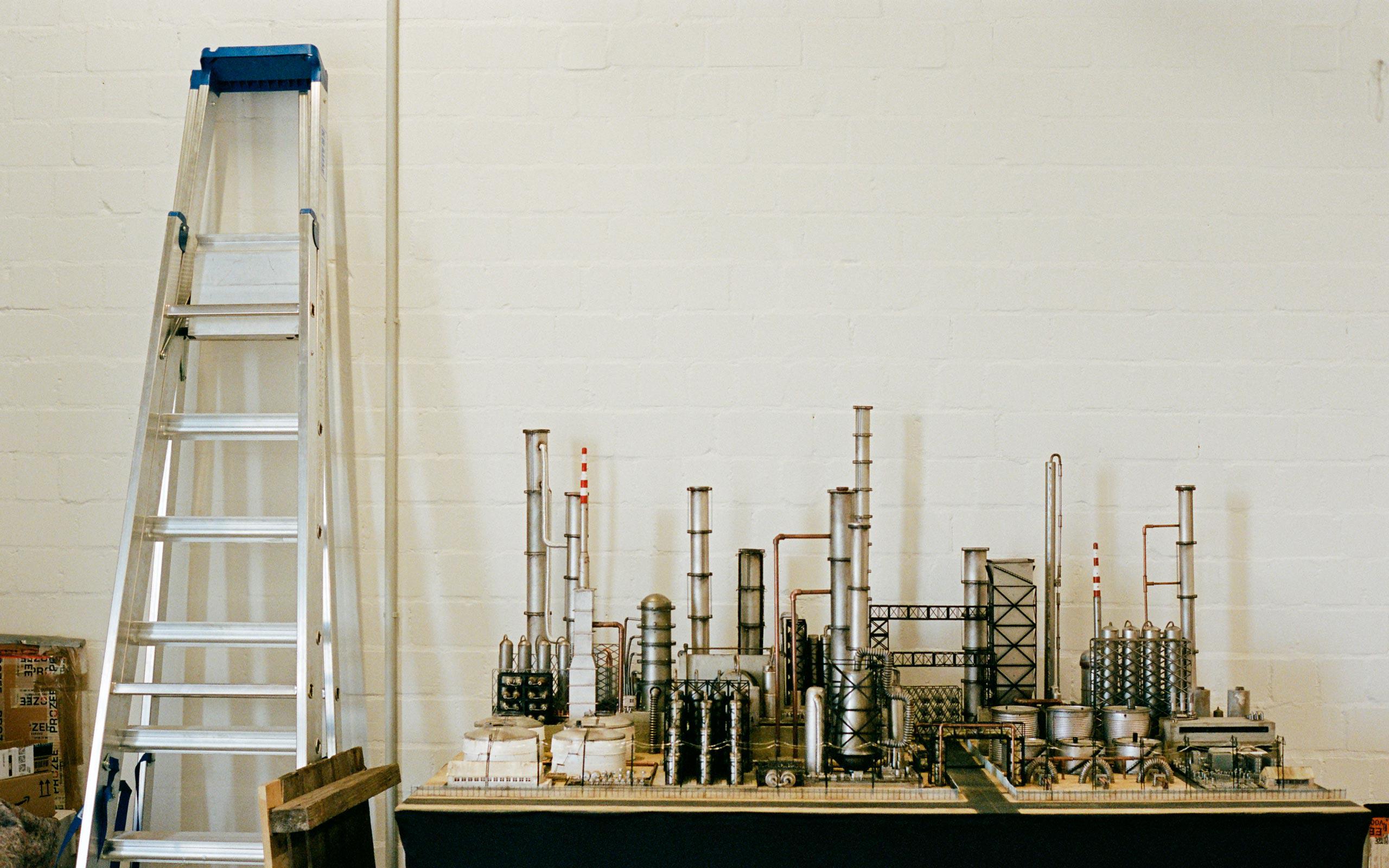
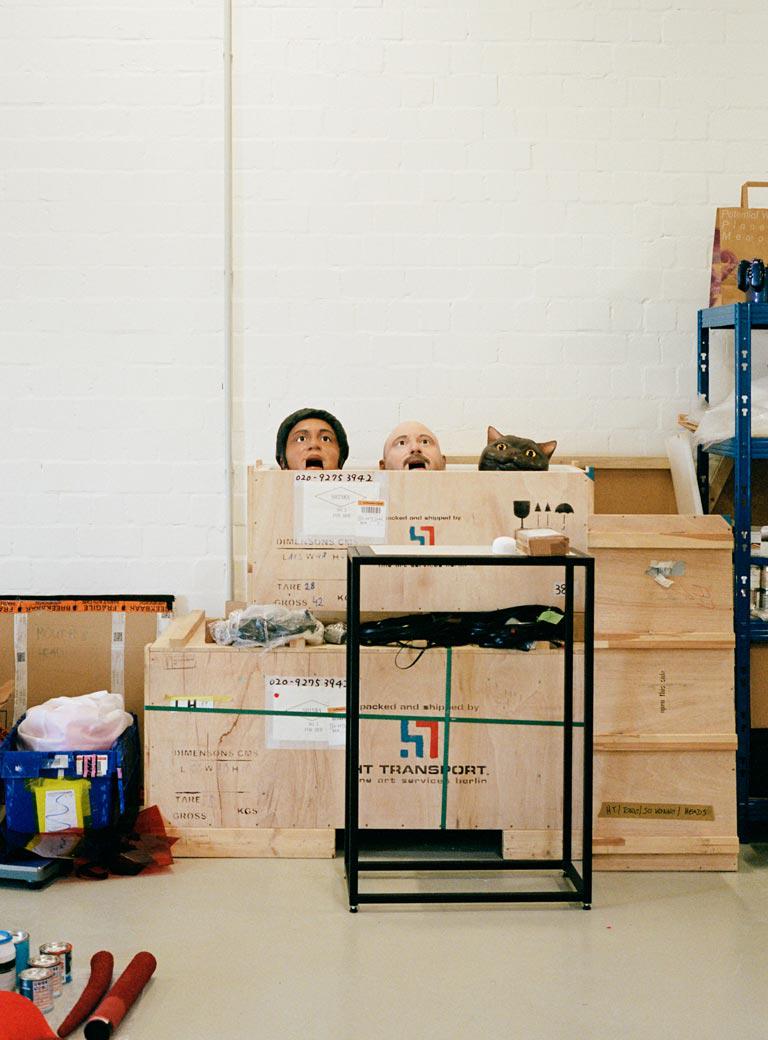
You use your multidisciplinary approach to address topics surrounding the Gulf and the Middle East where you grew up. Was your PhD thesis, The Aesthetics of Sadness in the Middle East, the foundation of this line of enquiry?
I’m fascinated by emotional landscapes of tragedy. It’s very prevalent in Arab culture to see sadness and its expression as virtuous, enjoyable, and noble. Sadness is just part of life. When I moved to Japan, I missed feeling a sense of indulgence in tragedy. I wrote my whole thesis about it, addressing artistic as well as religious practices and many other things. Since then, I’ve made works that look colourful, beautiful, pop, and interesting on the outside, but that have difficult, tragic stories behind them. I always like to approach this binary with my artistic practice.
How did you transition from 10 years in academia into the art industry?
My PhD was studio-based, so it felt more like a residency than classical academia. After 10 years in Japan, I felt a bit limited by being there, and realised that I’d always be an outsider. I decided to go back to the Middle East and to try and give back to my home a little bit, as well as to absorb something new. In addition to Kuwait and Dubai, I spent a lot of time in Beirut, which has one of my most advanced art scenes in that region. Lebanon is a very difficult place to live, and artists really have to bend over backwards and contort their minds to be able to sustain themselves in that country. There, I learned a lot about how to be an independent artist, get grants, and apply for residencies without compromising my own vision. After Beirut, I moved to Amsterdam to do a residency at the Rijksakademie, which was heavenly. You get a studio, housing, production budget, and technical support for two whole years. It was like being given free rein. That really took my practice to another level. Now I’m based in Berlin.
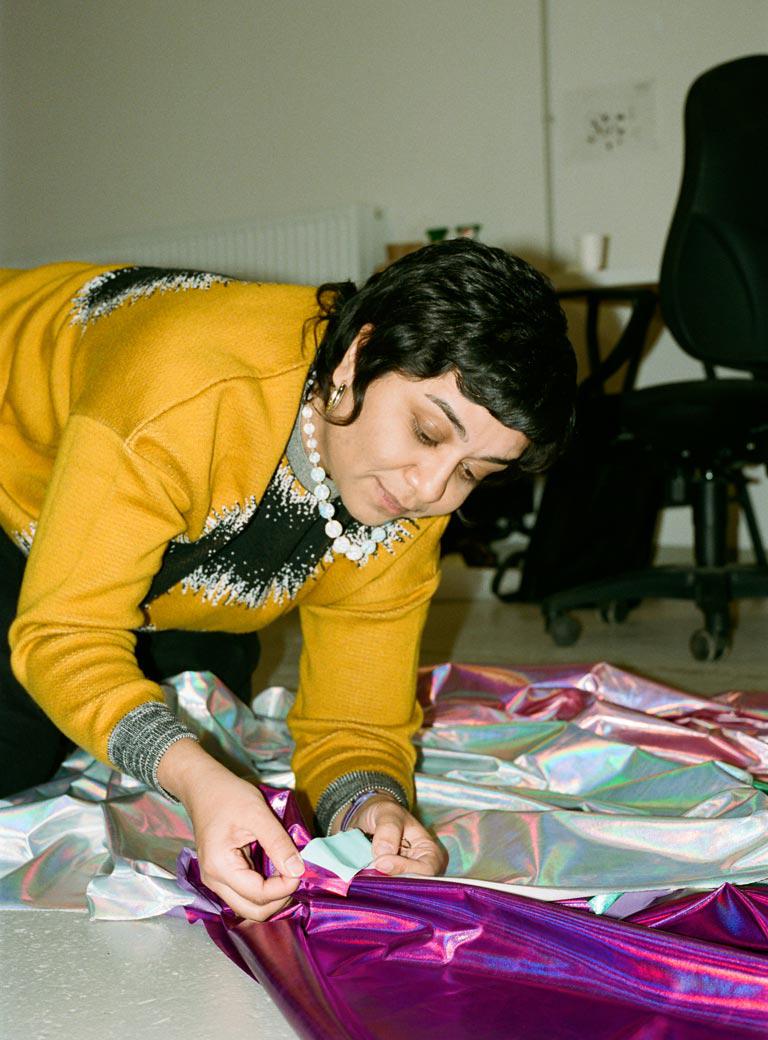
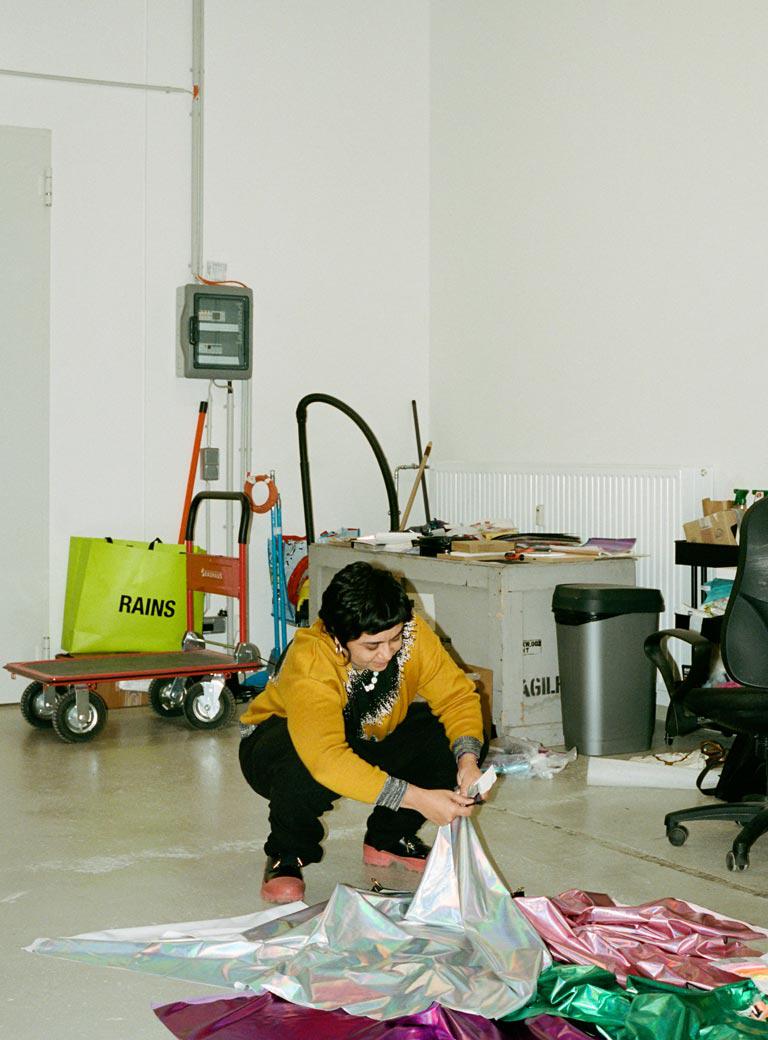
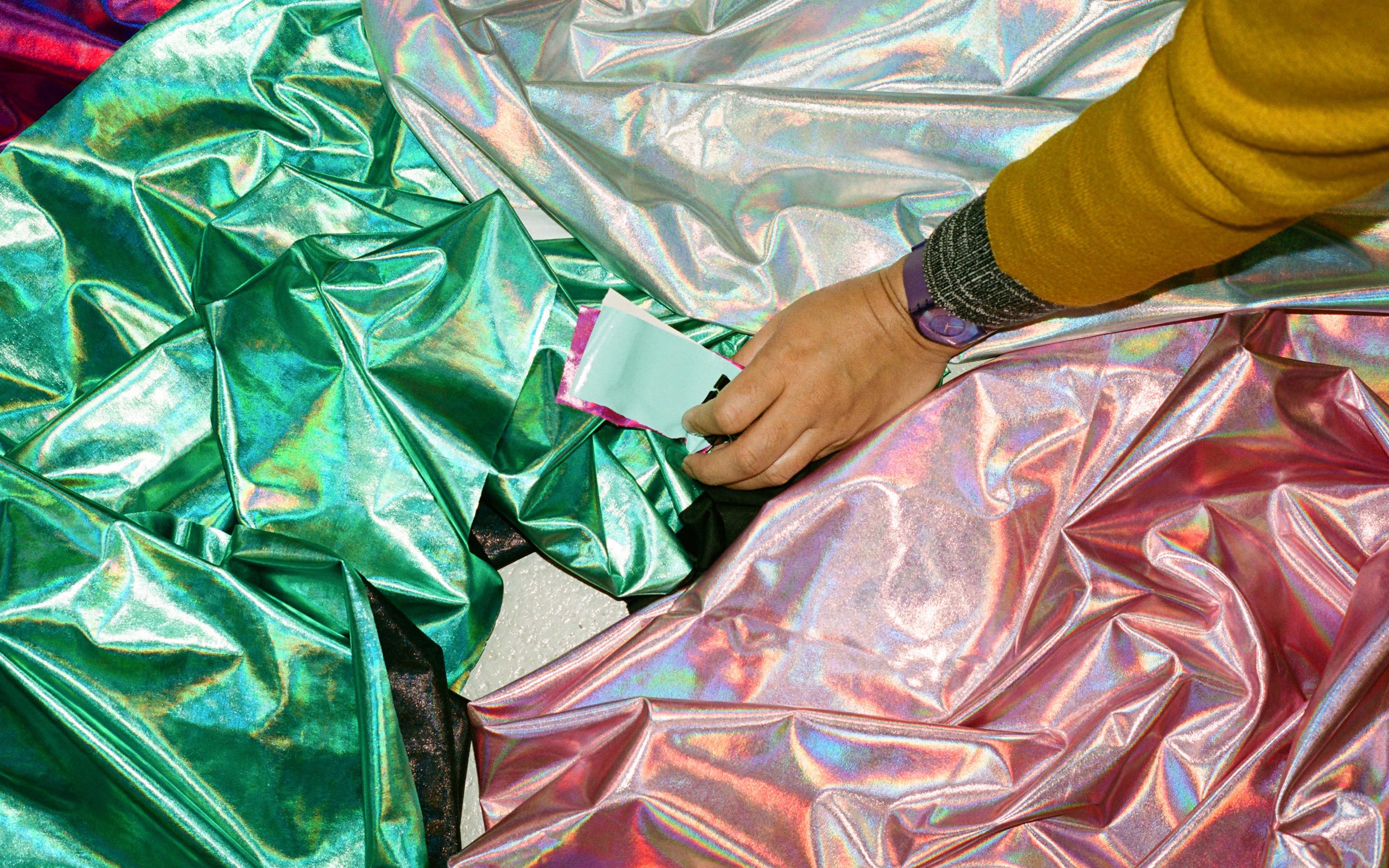
Shortly after you graduated you founded the collective GCC. Can you tell us a little bit about the group and the projects you worked on together?
I was with GCC for five years before leaving in 2018. It was a wonderful experience, an explosion of ideas and talent. There were eight of us involved—an assortment of artists, architects, furniture designers, and curators etc—and the idea was to collectively delve into the contemporary aesthetics of the Gulf. Nobody in the artworld had attempted to tackle contemporary life in the region before. A lot of our works were political and quite controversial. At first, we thought we’d try to do one or two shows a year, but everything accelerated quite rapidly. Within a year, we were invited to put on a solo show at MoMA PS1. After that, we had shows going on everywhere, around four per month at one point. It was really intense. We were all living in different countries and relied mainly on digital communication to coordinate everything. It got to the point where I could no longer reconcile it with my own personal practice. We’re like a family and are all still very much in communication all the time. We’ll work together again in the future for sure.
How does your current practice differ from what you were creating with GCC?
My work also considers the Gulf as an entity, but it is also about my personal life. It’s biographical and reflects on past events. People always think my work is very futuristic, but it’s very much based in the past.
This preconception of futurism may come from the fact that you use progressive processes and technologies. In your work Suspended Delirium, for example, you created three floating robotic heads that converse in an absurd manner about dreams, conspiracies, urban memories, and life in the digital age. Can you tell us more about that piece?
My partner Raed Yassin and I got commissioned to make a performance piece during the global pandemic when no human contact was allowed. We thought: “Why don’t we make a performance robot?” Suspended Delirium was the result. It was really a product of that time. We contacted a friend of mine from Japan who is a robotics artist and happened to be in Berlin. He was really excited about the project and helped us to develop it. Most of the time the people I collaborate with are my friends. I’d never worked with my partner before this project, however. We had this policy that we shouldn’t work together, but during the pandemic we were in each other's faces all the time and could no longer avoid it.
I saw Suspended Delirium as part of the group exhibition The Sun Machine Is Coming Down at Berlin’s International Congress Centre in 2021. Seeing these three floating heads, one of which is a cat, having absurd conversations was at once creepy, sinister, and comical. Is humour an important part of your practice?
Definitely. I come from a place where there’s not a lot of freedom of speech. If you make something a little bit funny or comedic, everybody accepts it. I discovered that humour is a weapon that makes difficult topics more accessible and digestible.
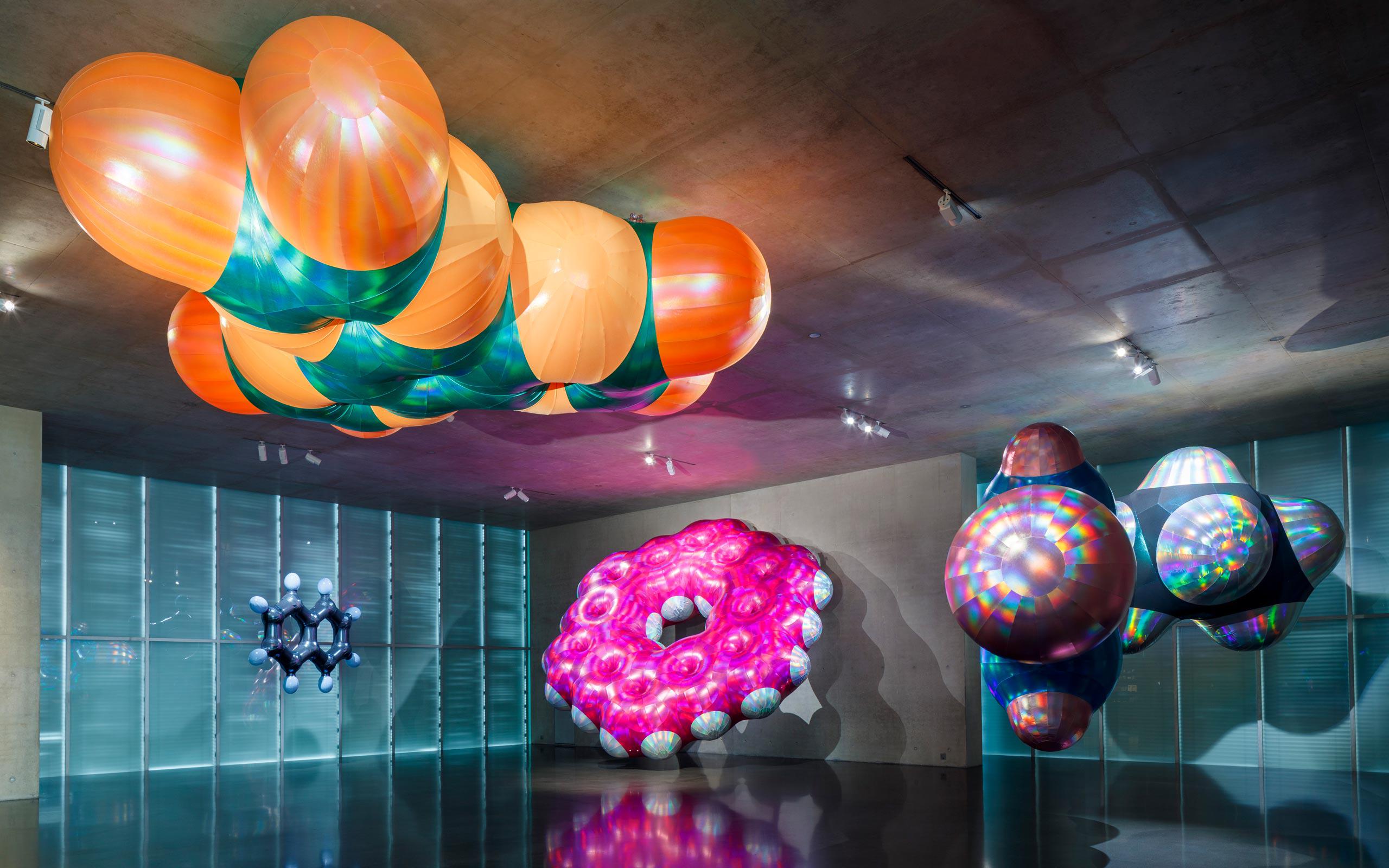
Monira Al Qadiri, BENZENE FLOAT, installation view, Kunsthaus Bregenz, 2023; Photo: Markus Tretter, Courtesy of the artist, © Monira Al Qadiri, Kunsthaus Bregenz
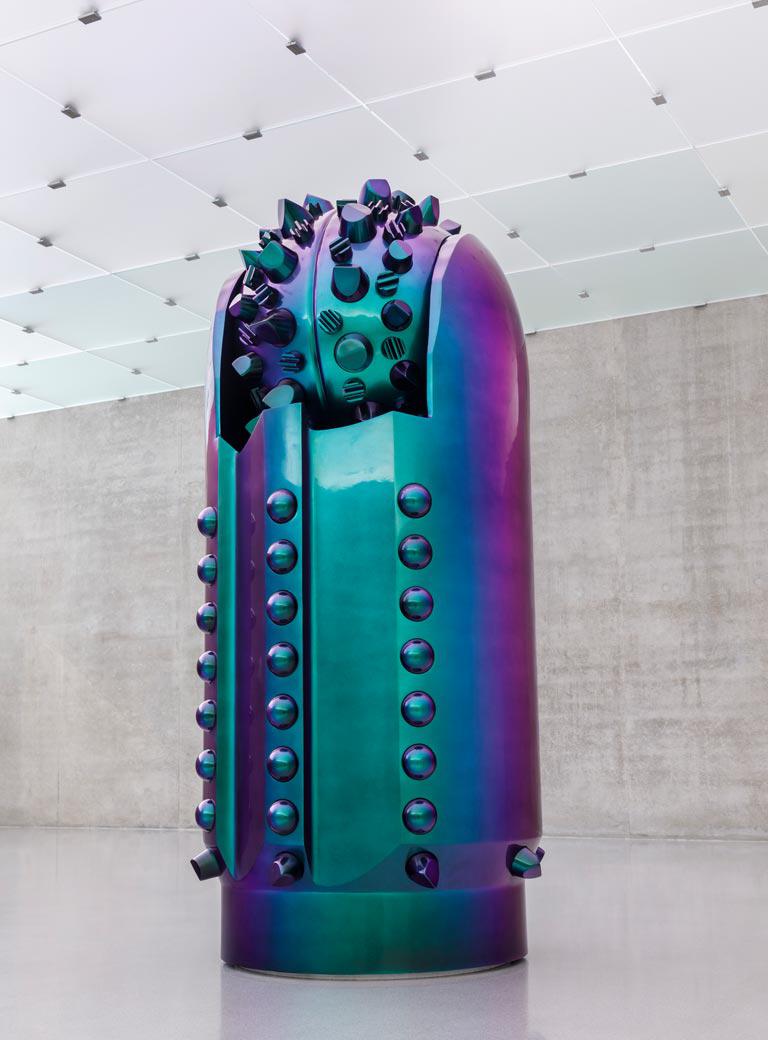
Monira Al Qadiri, Alien Technology (Tower), 2023, installation view, Kunsthaus Bregenz, 2023; Photo: Markus Tretter, Courtesy of the artist und König Galerie; © Monira Al Qadiri, Kunsthaus Bregenz
Can you tell us about some of your most recent projects such as Zephyr (2022) and Crude Eye (2022).
Crude Eye was the result of a commission. I got to do a solo show in Texas. I wanted to address the elephant in the room of the Texan oil industry being the blueprint for the one in the Gulf. There are landscapes of oil refineries in Kuwait that are very similar to those you can find in America, even though we’re located in completely different parts of the globe. As a child, oil refineries were the most sci-fi, high-tech things I’d ever seen. I always imagined they were cities and that people lived there. I wasn’t aware of how they ran or the inner mechanics of them, so I just had these innocent fantasies about them. I wanted to play with this contrast between oil refineries’ beauty and the pollution and destruction they cause. In Kuwait, you’re not allowed to film refineries because it’s considered a security risk. Instead, I built a miniature model of a refinery in my studio, which I filmed using a special camera that made it look life size. During the opening, some of the visitors in Texas asked how I managed to find an oil refinery with no workers in it; I had managed to fool them! Zephyr is a public art piece that was commissioned by Qatar museums on the occasion of the World Cup. I wanted to create something about the ocean, because before the oil industry came to the Gulf, water was a large part of our lives. One of the area’s main industries was pearl diving. I wanted to create something that allowed the region to re-enter the oceanic space in an interesting and eye-catching way. After some research, I found out that there are microscopic organisms in the waters off the coast of the Gulf that glow in the dark and produce half of the world's oxygen. In response to this, I created a series of glowing sculptures—which almost look like holograms—out of plexiglass, which is a very special, ecologically friendly material.
What are you working on right now?
I’m currently working towards my largest solo exhibition to date, which will consist of all new works and be on show at Kunsthaus Bregenz from April until July 2023. It is the culmination of everything I’ve been working on for the past 10 years on the topic of oil and petroculture. Spanning four floors, the exhibition has a clear dramaturgy and narrative structure that leads visitors from work to work. It’s a very ambitious project. After this, I have a solo exhibition at UCCA Dune in China. The museum is on the beach, so it’s a perfect location for the works I’ve made about marine and oceanic worlds.
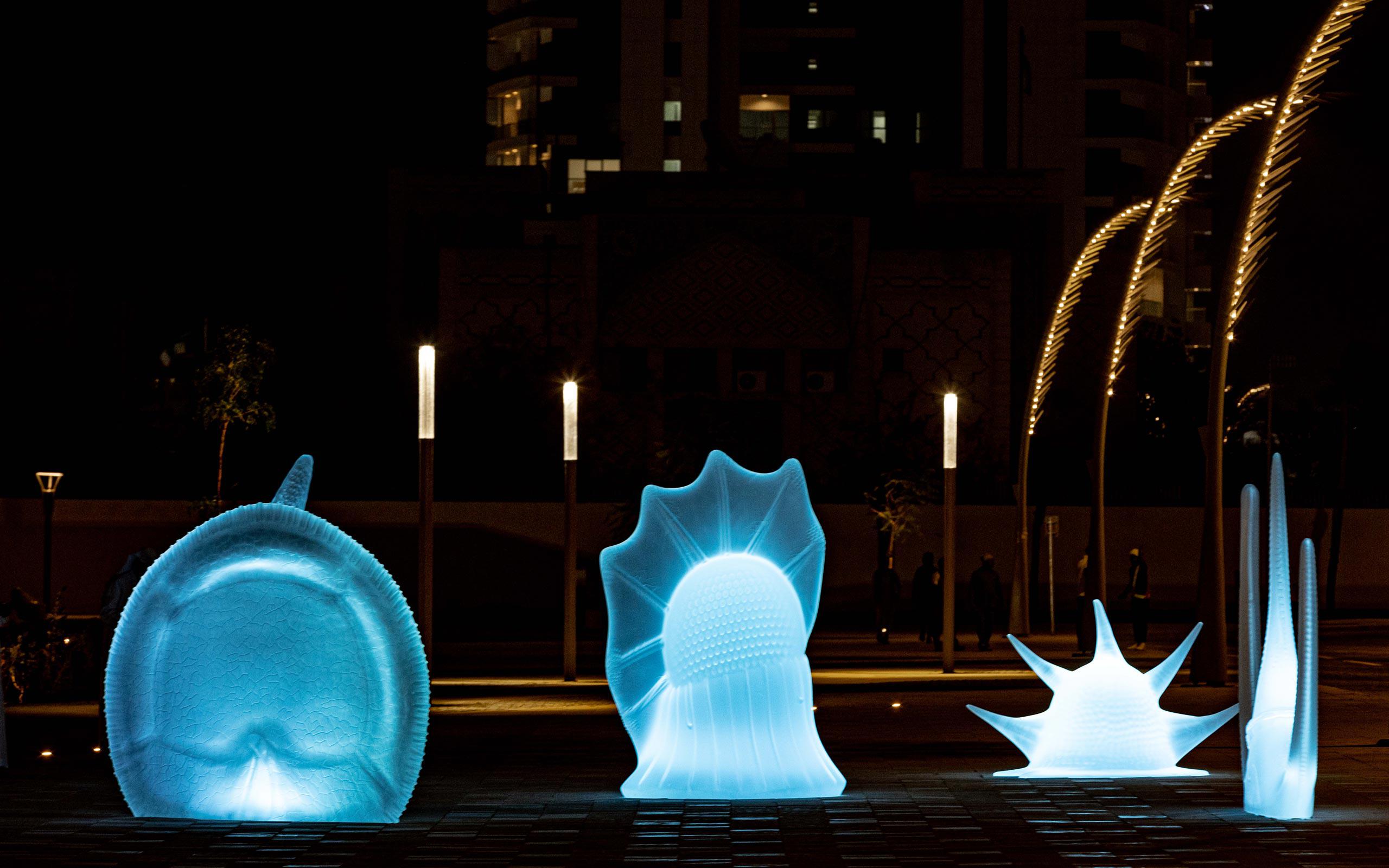
Zephyr, 2022, Plexiglass, LED lights, Photo by Qatar Museums
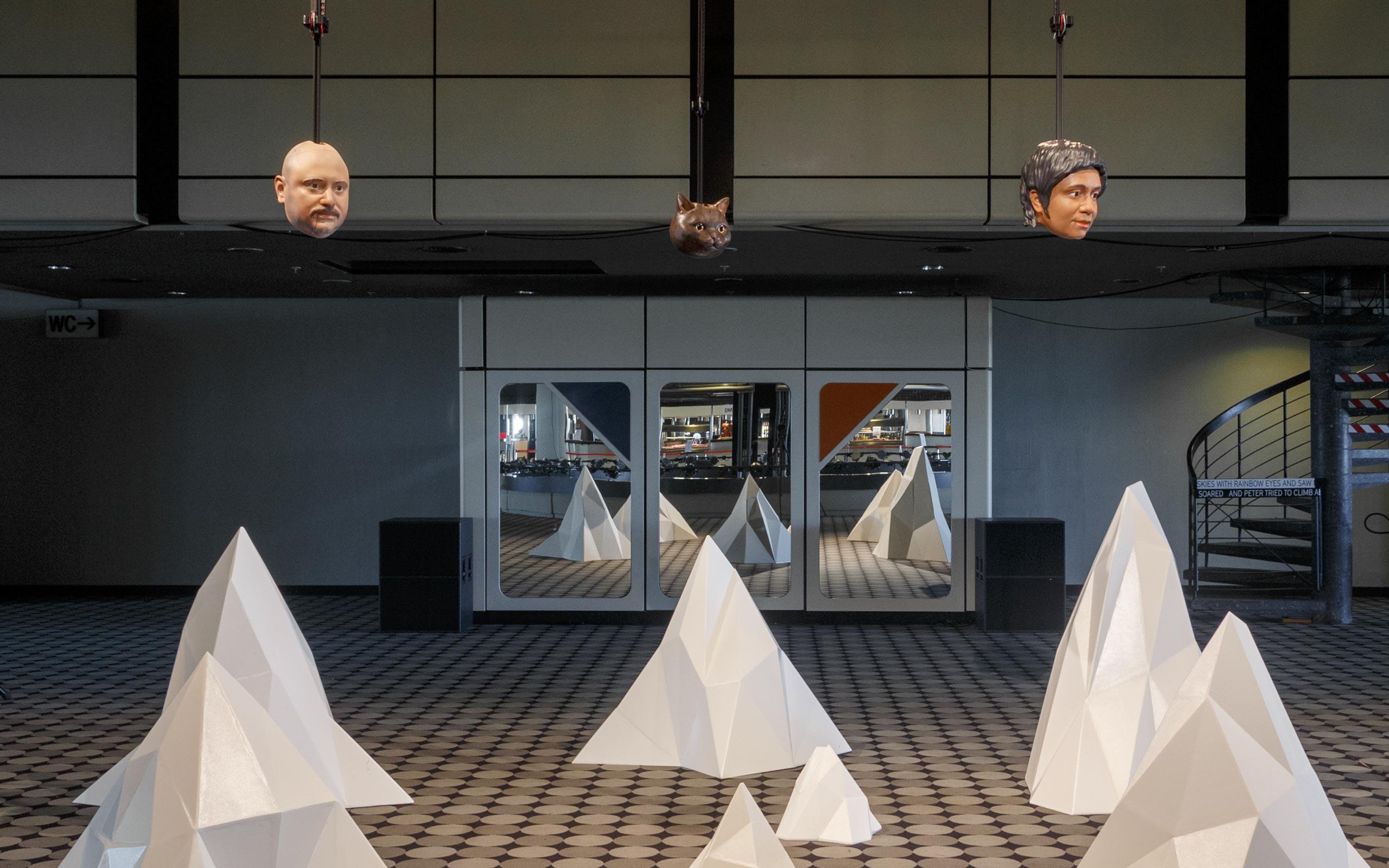
Suspended Delirium, 2021, Robotic performance, sound, Photo by Tony Elieh
You said your upcoming exhibition is the culmination of the past ten years of your practice. With this in mind, what are your ambitions for the next ten years?
I am very passionate about art in public spaces. It’s a completely different animal than making work indoors in a controlled space. The work reaches such a wide audience and has such unexpected results, so I would love to be able to do more of that, it’s my passion.
Is there a particular public space you’d like to work in?
I love making public art in the Gulf. It's very meaningful for me to do projects there, even though it's more difficult sometimes. Aside from that, I’m happy to consider different spaces, from the middle of the city to somewhere in nature. There’s something very magical about walking through a forest in the middle of nowhere and passing by a public art work. I want my public artworks to grow old, get scratched up, and even get bird poop on them. When you live around these things, they become part of you and the memory of the place. I want to keep creating them for as long as I can.
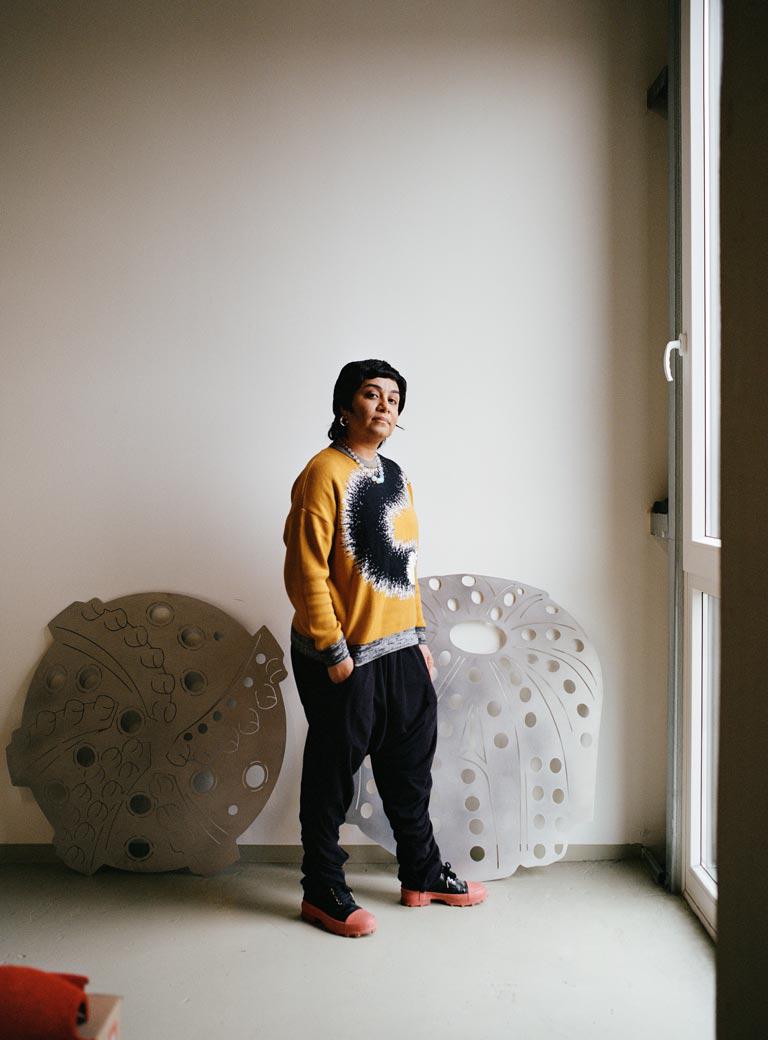
Interview: Emily May
Photos: Sabrina Weniger



